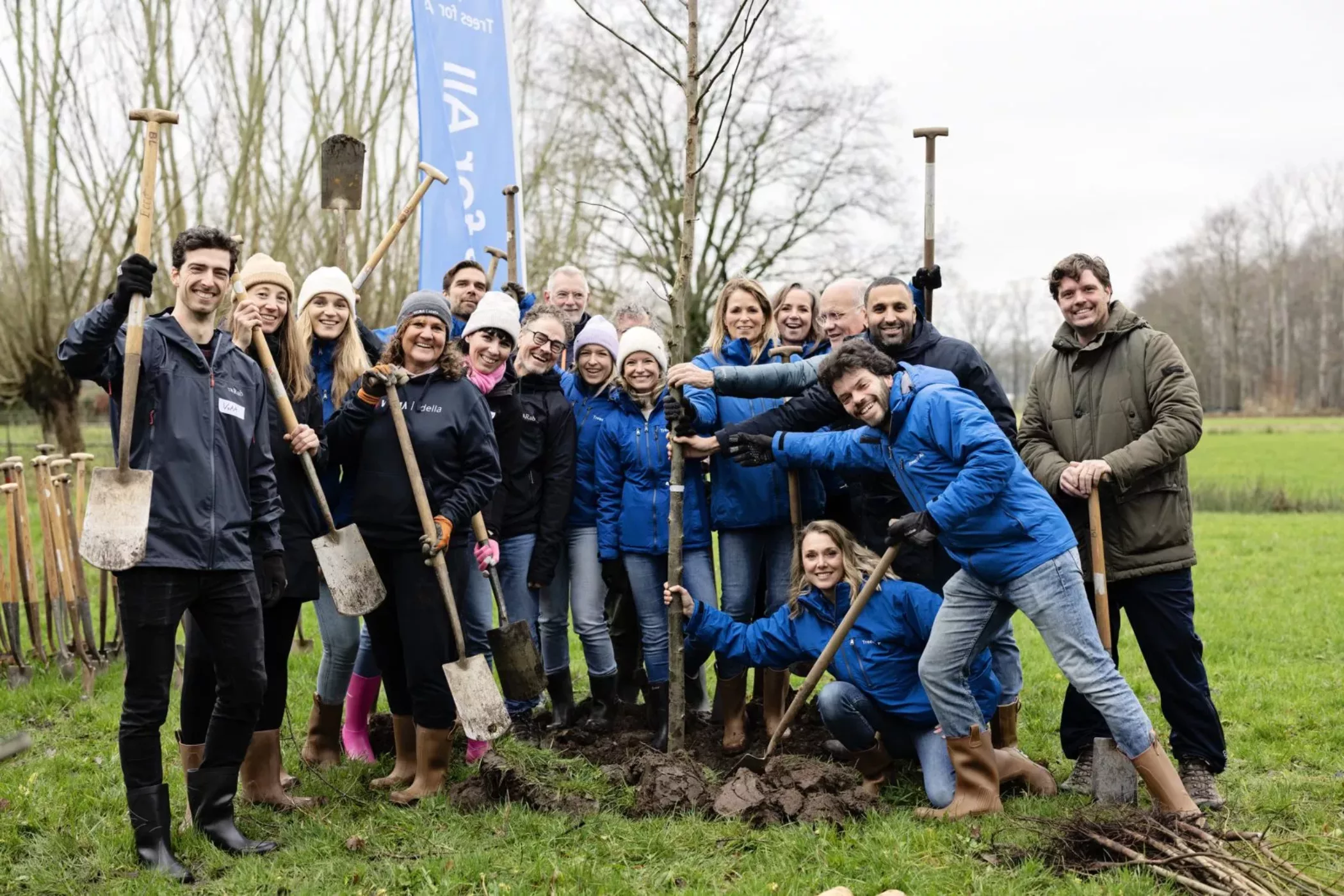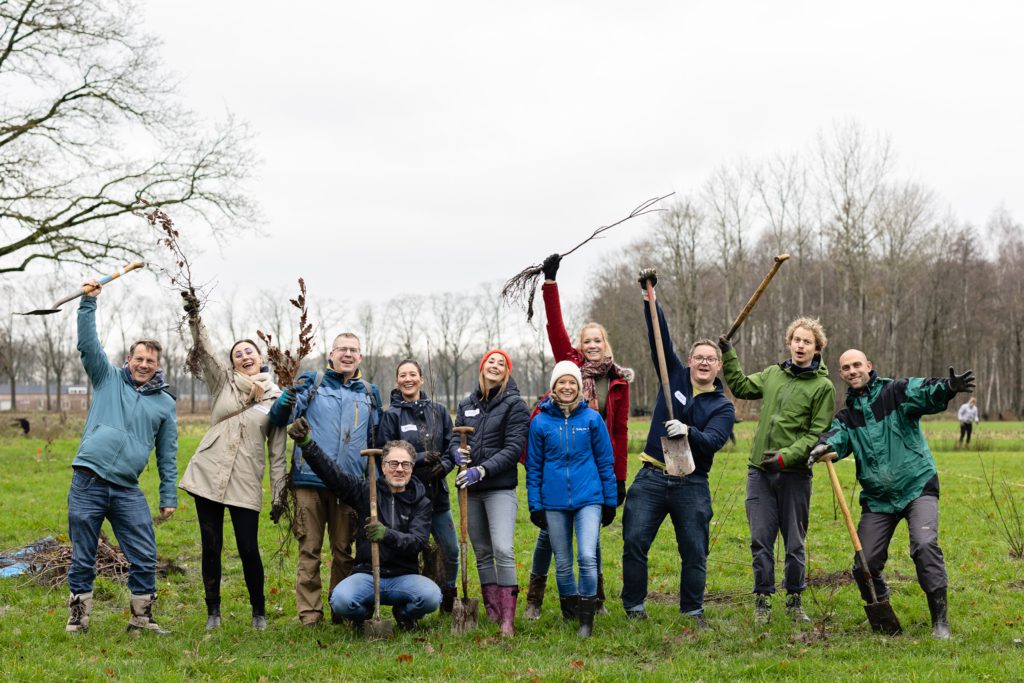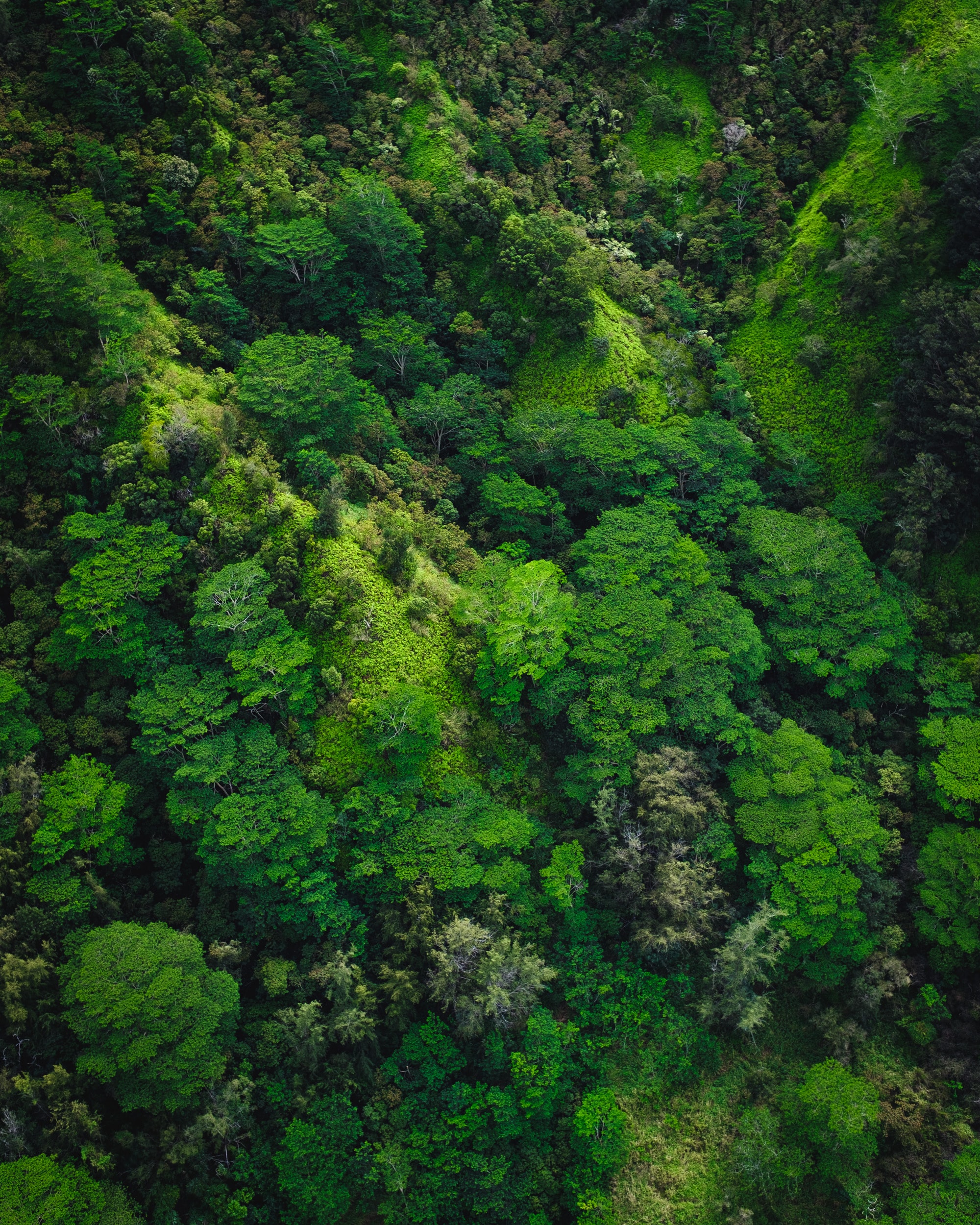68,832 more trees in Het Groene Woud: results 2023-2024
16 September 2024

16 September 2024
Since 2020, we’ve been planting new loam forests in Het Groene Woud, in North Brabant, in partnership with ARK Nature. Together, we’re expanding these scarce forests, which are home to numerous species of plant and animal. And we’re already seeing the positive results of the project!
trees and shrubs
different species
planting season (Dec – March)
The Dutch loam forests are known as the ‘treasure trove of biodiversity’. Thanks to their damp soil, they support a wide variety of plant and animal life. They also play a very important role in the battle against climate change and increasing drought. Loam forests are scarce in the Netherlands, so it’s important to protect and expand them.
We’re doing so in Het Groene Woud in collaboration with our project partner ARK Nature. We’re hand planting species of tree that occur naturally in the area, including European white elm, lime and hawthorn. This gives a kick-start to the new forests and links up existing natural areas, creating a big, unbroken habitat for all sorts of plants and animals, including rare butterflies, wild cats, tree frogs, red-backed shrikes, otters and black storks.
Thanks to your contribution, a total of 68,832 trees were planted in Het Groene Woud in the winter of 2023-2024, which are spread over 19 plots in Brabant. You also rolled up your own sleeves on the tree planting days. And the good news is that despite the extremely wet conditions, the trees are growing really well!

In Schijndel, the trees were planted by our enthusiastic corporate donors (December 2024)

The planting site in Schijndel in July 2024: the trees are in full leaf among sorrel, a wild herb
There was a great deal of rain, both in the winter and in the spring, which led to a period of flooding and made it difficult to prepare for the planting season. We’re planting the new forest on former agricultural land in Brabant. Normally speaking, the land is worked beforehand by the ARK staff. On arable land, for instance, ARK sows corn. This loosens up the soil and improves its fertility, so that the saplings can grow well.
But last season, it wasn’t possible to do that everywhere, as the heavy machinery that helps to prepare the soil couldn’t drive on the wet ground. So in Schijndel, the planting was done in between what remained of the arable crops. Even the planting days often didn’t stay dry for us, but that didn’t get in the way of the fun!
Despite the extremely high water levels at the time of planting, fortunately most of the trees are doing well. Even better, the new forest is developing well everywhere and we’ve lost hardly any trees! Only at the Velder planting location did we lose around 400 trees, which will be replanted.
At the plot near Wielse Kamp, ARK did manage to sow the ground with grain beforehand. This means the soil is covered and we can prevent the saplings being choked by emerging grasses. And that’s helped, as the trees there are already over a metre high! The grain is an annual crop and will die back, but meanwhile it boosts biodiversity by attracting all sorts of plants and animals.
There was an extra special occasion this winter, when we planted the 10 millionth tree since Trees for All was established – a beautiful large-leaved lime – during the planting day in Schijndel.
Our 10 millionth tree is in the ground!
The trees and shrubs we’ve planted are characteristic of loam forests, and include hornbeam, elm, hedge rose, common dogwood, lime and alder. They’re naturally at home here and are more used to having wet feet. We’ve therefore planted a robust and diverse forest that’s resilient to extreme weather conditions.
This is clearly reflected at the planting locations, where each tree has adapted in its own way to the extreme amount of rain that fell. Only the occasional tree got brown tips on its leaves. Other trees decided to enter their winter state early (shown by red leaves). That means they’re already preparing for the following growing season.
Yet others are actually thriving in the wet soil. For example, the viburnum and alder buckthorn (also known as glossy buckthorn) are already producing berries. They’re already thinking about the next generation! If it should suddenly get very dry in the summer, we can expect these resilient trees to be able to cope well with that too.
Gelderland rose and spruce birch are already producing berries at the Wielse Kamp site in July 2024 despite the wet planting season
When planting new forests, it’s normal that not all the trees survive. So we make agreements with our project partners beforehand about the percentage of loss we allow within a project. Usually, this percentage is between 5 and 15%. If the loss is higher, due to unforeseen circumstances, then new trees are planted in the following planting season. This is also known as refill. So together, we make sure the forest gets off to a good start!
After planting the new loam forest, ARK is letting nature do its own thing and is watching to see what nature grows spontaneously in the area. We refer to this as natural regeneration. It’s a unique approach, which we at Trees for All are happy to support.
ARK is also putting dead wood down on the floor of the new forest, so that micro-organisms like fungi and good bacteria can grow on it. In turn, they ensure a healthy forest soil, which will get the young forest off to a good start.
Although the forest is still very young, we’re already seeing its positive influence on biodiversity. The land on which we planted was previously used for growing maize or perennial ryegrass, involving the use of a lot of fertilizers and weed killers, which are extremely bad for the soil, soil life, groundwater and insects. The use of these weed killers has stopped with the arrival of the new forest.
And what do we see? Immediately, different species of bird are coming to explore the new forest! In addition, ARK has spotted hares, rabbits and deer there. And the flora is gradually returning to the area as well.
Among the cranes flying over Het Groene Woud in the springtime, a white-tailed eagle was also spotted. This really impressive bird of prey flew near to the ARK plot Hooge Beek and the Beeksche Waterloop in De Geelders. White-tailed eagles have been rare in the Netherlands for a long time. The Dutch bird protection society, Vogelbescherming, reports that sightings in the Netherlands are on the increase. Hawfinches and partridges are also coming to breed in the loam forests of Het Groene Woud.

Step by step, with each plot on which we plant new forest, we’re linking up different loam forests in Het Groene Woud. This network of existing and new natural areas is extremely important to biodiversity. It allows creatures like pine martens, white admirals and tree frogs to travel over greater distances unimpeded. And the forest will attract new plants and animals as well. In this way, we conserve and reinforce the unique biodiversity of these loam forests!

Without the support of our donors, this project would not have been possible. Together, we have made the world a little greener again. See you next planting season!